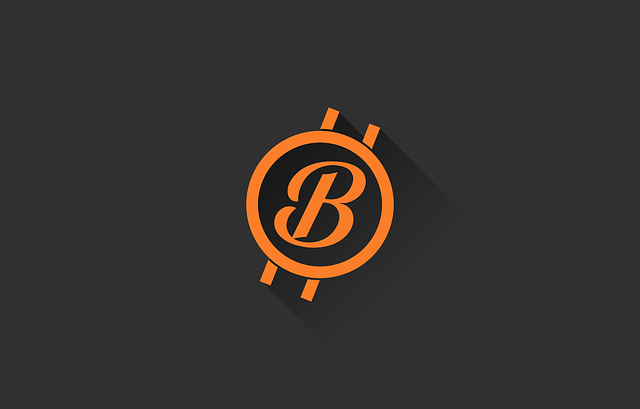Bitcoin mining hardware is vital for securing the network and validating transactions, with its performance directly affecting miners' competitiveness and block rewards. Every four years, "halving" events reduce these rewards by half, controlling Bitcoin's inflation rate and increasing computational difficulty. These events significantly impact mining dynamics and market prices due to reduced supply and historically lead to price surges. Key metrics for hardware assessment include hash rate, power consumption, and cooling, while the contrast between mining farms and individual miners highlights diverse operational strategies. Understanding halving events is essential for investors forecasting Bitcoin's price swings in the volatile cryptocurrency market, as it influences both supply and demand.
“Uncover the crucial role of Bitcoin mining hardware in securing the network and its direct correlation with halving events. This article delves into the evolution of mining equipment, from understanding its basics to comparing today’s cutting-edge models. We explore how hardware adaptations influence mining difficulty and energy efficiency, particularly post-halving. By examining real-world case studies, we gain insights into the dynamic between mining farms and individual miners. Moreover, we forecast future trends, shedding light on how halving events shape hardware upgrades and Bitcoin’s long-term sustainability, including its impact on the global cryptocurrency market.”
- Understanding Bitcoin Mining Hardware and Its Role in Network Security
- The Impact of Halving Events on Bitcoin Mining Difficulty
- Comparison: Latest Bitcoin Mining Hardware on the Market
- Efficiency Metrics: Hash Rate, Power Consumption, and Cooling Requirements
- Case Studies: Mining Farms vs. Individual Miners
- Future Trends: How Halving Affects Hardware Upgrades and Bitcoin's Long-term Viability
Understanding Bitcoin Mining Hardware and Its Role in Network Security

Bitcoin mining hardware plays a pivotal role in maintaining the integrity and security of the Bitcoin network. It’s responsible for solving complex computational puzzles, a process known as hashing, which validates transactions and creates new blocks on the blockchain. The hardware’s primary function is to process data quickly and efficiently, ensuring that miners can compete for these block rewards.
The importance of mining hardware extends beyond performance; it directly influences Bitcoin’s network security. With increasing computational power, miners are able to secure the network against potential attacks. Every four years, a significant event known as “halving” occurs, where Bitcoin’s block reward is halved, incentivizing miners to continue contributing their computing resources. This not only maintains the network’s security but also has had notable impacts on Bitcoin’s price throughout its history due to its limited supply and increasing computational difficulty.
The Impact of Halving Events on Bitcoin Mining Difficulty

Bitcoin’s halving events have a significant impact on mining difficulty and, consequently, on the cryptocurrency’s market dynamics. These events occur approximately every 210,000 blocks, or roughly every four years, where the block reward for miners is cut in half. This mechanism is designed to control Bitcoin’s inflation rate, as it reduces the number of new coins entering circulation. As a result of halving, mining becomes more competitive, and miners must invest in more powerful hardware to maintain profitability.
The halving impact on Bitcoin price is noticeable as supply decreases while demand remains or increases. Historically, these events have led to price surges, as the reduced coin issuance creates scarcity, enhancing Bitcoin’s perceived value. This dynamic can drive investment and adoption, further solidifying Bitcoin’s position as a store of value and potential hedge against inflation in traditional financial markets.
Comparison: Latest Bitcoin Mining Hardware on the Market

Efficiency Metrics: Hash Rate, Power Consumption, and Cooling Requirements

Bitcoin mining hardware’s performance is often measured by three key efficiency metrics: hash rate, power consumption, and cooling requirements. The hash rate represents the speed at which a miner can process transactions and solve complex mathematical problems, crucial for validating blockchain blocks. High hash rates indicate more computational power, potentially leading to faster block times and higher Bitcoin rewards (in terms of both currency and network security).
Power consumption is another vital factor, as it directly impacts both operational costs and the environmental footprint of mining. Efficient hardware not only reduces electricity bills but also plays a role in mitigating the halving impact on Bitcoin price—a scheduled event that cuts mining rewards in half, potentially affecting miners’ profitability. Cooling requirements are closely linked to power consumption; efficient cooling systems can help maintain optimal operating temperatures, ensuring longevity and peak performance for mining rigs.
Case Studies: Mining Farms vs. Individual Miners

Mining farms and individual miners represent two distinct ends of the Bitcoin mining spectrum, each with unique operational dynamics that influence their effectiveness and profitability. On one hand, mining farms are large-scale operations comprising numerous specialized computers rigorously optimized for mining efficiency. These centralized facilities often enjoy economies of scale, leveraging advanced hardware, efficient cooling systems, and consistent power supplies to maximize hash rates. This advantage allows mining farms to process more blocks and earn higher rewards compared to individual miners.
In contrast, individual miners operate alone with their personal hardware. While they lack the infrastructural benefits of farming operations, they possess greater flexibility and decentralized control. Individual miners can adapt their mining strategies based on market conditions, including the periodic Halving events that significantly impact Bitcoin’s price. During halving, the reward for mining a block is reduced by half, which typically leads to increased competition and higher network difficulty levels. This scenario can favor well-resourced mining farms but may present challenges for individual miners who must continually upgrade their hardware to stay competitive in the face of rising energy costs and market volatility.
Future Trends: How Halving Affects Hardware Upgrades and Bitcoin's Long-term Viability

Bitcoin mining hardware plays a pivotal role in maintaining network security and the overall health of the blockchain. As the mining difficulty adjusts with halving events, it drives innovation in hardware efficiency. The latest Bitcoin mining machines offer improved hash rates while consuming less power, making them more sustainable. However, the competitive nature of mining encourages ongoing advancements, as both mining farms and individual miners strive to stay ahead. Understanding these trends is essential for gauging Bitcoin’s future viability, especially considering the halving impact on both hardware upgrades and cryptocurrency prices.
